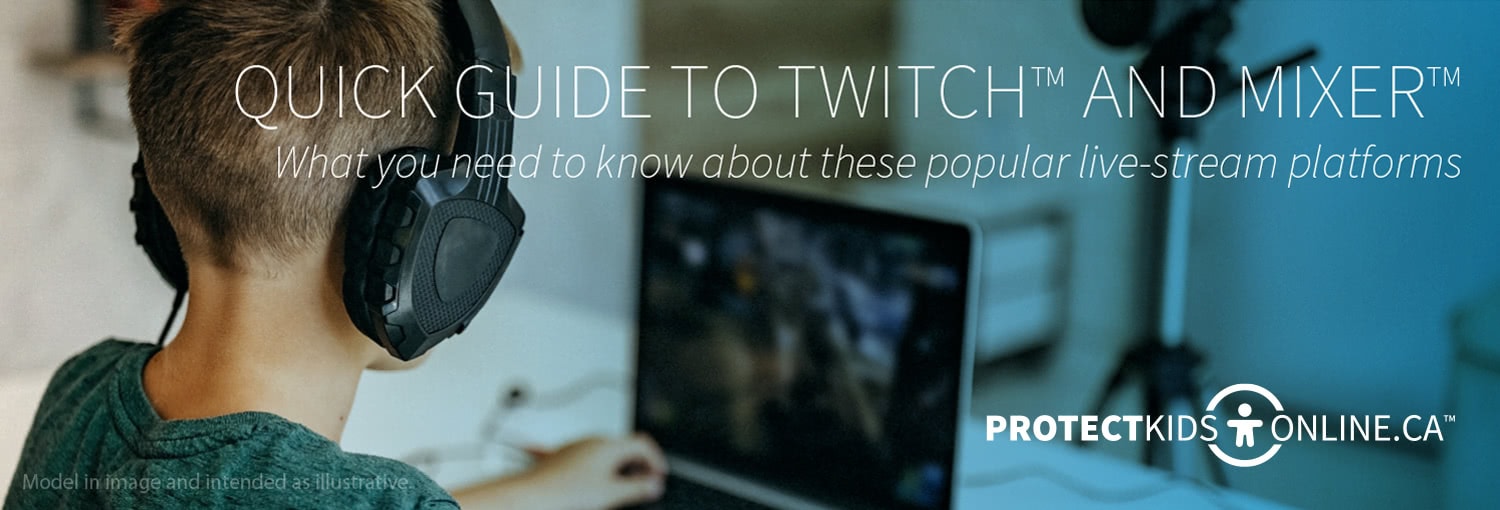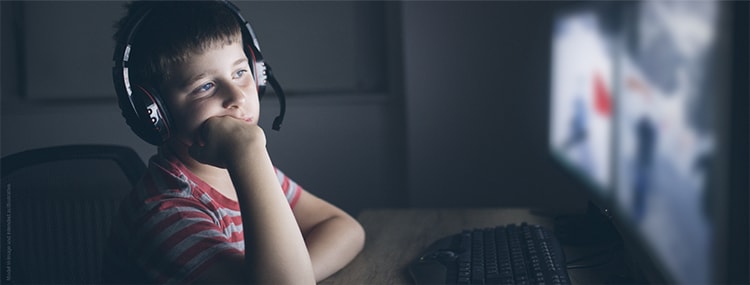Quick Guide to Twitch® and Mixer™
What you need to know about these popular live-stream platforms

“No one streams on Twitch anymore,” sighs my teen, rolling his eyes. “Everyone’s on Mixer. Ninja is on Mixer.” Okay, who does what where now?
If you have a teen gamer in the house you may be painfully aware how quickly you can fall behind with the latest games, platforms, and personalities. So quick update, apparently you don’t just play video games anymore, you stream yourself playing them (or watch someone else do it).
Currently the two biggest websites/apps for this: Twitch and Mixer. Twitch has more than 15 million daily active users,1 and more people watch live streams on Twitch than anywhere else.2 However, Mixer got a boost last year when Ninja, an extremely popular professional gamer, switched to the platform from Twitch.3
Live-stream gaming allows teens to connect with others who enjoy the same games, learn new tactics from professionals, and generally just show off their own moves. But no matter who’s streaming what where, there are certain risks that parents should make sure they’re keeping up to date on.

What is Twitch and Mixer?
Both Twitch and Mixer are live-streaming websites and apps that focus mostly on video games — in other words streaming yourself playing Minecraft®, or watching someone else play Fortnite®.
Twitch’s newest feature is “in-real-life streaming” where users just chat in front of the camera, dance, bake, or whatever. One stream I logged onto was just four guys playing Scrabble® and it had over six million total views.
Both Twitch and Mixer promote interactivity with real-time chat where video viewers can interact with the streamer and other participants.
In order to register for Twitch users must be 13+, but as with most apps/platforms age verification can be bypassed by entering a false birthdate.
Mixer doesn’t ask for age verification when signing up. However on their website Mixer says children 12 and under can stream on the platform, but the account must be owned by their parent/guardian, and the parent/guardian must be on camera at all times. Users aged 13–16 can have a channel with parental consent.4

What are the Risks?
- Because it’s live, content can’t always be moderated, meaning anything can happen — from explicit language, to sexual content, to violence.
- The chat function, which also can’t always be moderated, provides potential for online bullying, hate speech, inappropriate questions, and harassment.
- Screenshots of streams can be captured and the videos themselves can be recorded using a separate program. Once saved by others, it can be easily misused to embarrass or exploit teens.
- Private messages can be sent through Twitch’s Whisper, and Mixer’s Chat Whisper’s features. These options are, by default, on, which means anyone can direct message teens. According to 2019 research by the UK’s National Society for the Prevention of Cruelty to Children (NSPCC), one in 33 Twitch users age 11 to 17 has received or been asked to send sexual material to an adult online.5
- Games with adult ratings are broadcast on the platforms. Even without an account, users can log on to watch.
Grooming: Numerous live-streaming platforms have come under fire due to reports of grooming on their platforms. Cybertip.ca®, Canada’s national tipline for reporting online child sexual abuse and exploitation, has seen an increase in reports from victims age eight to 10, and continue to see a rise in youth victims ages 12 to 17 years old, through live-streaming apps. The tipline has forwarded reports to law enforcement regarding both Twitch and Mixer under the category of luring.6 For more information on what grooming is, how it happens, and how to prevent it, visit cybertip.ca/grooming.

What Can Parents Do?
- Spend time watching the streamers and channels your teen is interested in to get an idea of content in the chat and the tone of the broadcaster. Have open conversations about what both of you feel is appropriate and why.
- There are no parental controls on Twitch, so become familiar with how to use Twitch’s privacy settings, which includes how to disable Whisper and how to file a user report.
- Help your teen set the appropriate level of chat settings on Mixer, as well as setting up CATbot, which can help remove some of the unwanted and inappropriate chat content from their channel.
- Talk with your teens about the consequences of live streaming. It’s already hard to erase your online footprint as it is but what’s even harder is taking back something when you are streaming for everyone to see.
- Discuss that screengrabs and videos from live streams can be used against teens to embarrass or exploit them. Visit cybertip.ca/sextortion to learn more about sextortion, what it is and how to prevent it.
- Many times teens live stream at night in their bedrooms when parents are asleep or unaware. It’s a good idea to remove devices from teens’ rooms before bed, as well as consider turning off the Wi-Fi.
- Explain to teens that if they see something, or someone on the platform makes them feel uncomfortable they can come to you for help without consequence.